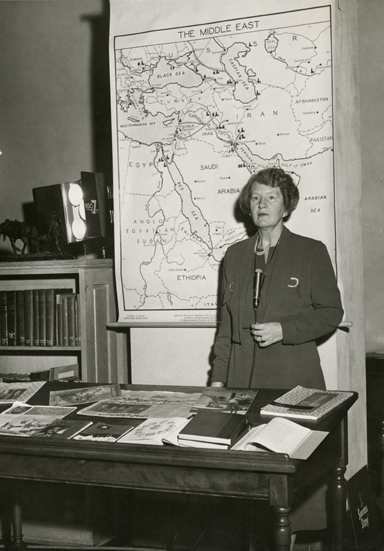Overview
The Middle East Collection was formally established in 1948, nearly thirty years after the founding of the Hoover Institution. The Institution has, however, held materials on the Middle East since its earliest days, including documents on the role of the Ottoman Empire in World War I; records of the American Relief Administration (ARA) in Turkey, the American Red Cross, and the Near East Relief, which cooperated with the ARA and the Red Cross in Turkey, Iran, and Syria; and documents from the Paris Peace Conference of 1919.
The establishment of the Middle East Collection in 1948 placed the collecting of Middle East materials on a systematic footing. Building on the foundation of holdings from World War I and its immediate aftermath, the Collection was developed by a combination of major purchases and a program of systematic acquisitions. Early major purchases included the libraries of James Heyworth-Dunne, Hidayet Dagdeviren, M. Huseyin Tutya, and Richard P. Mitchell.
In the 1960s and late 1970s and briefly in the early 1980s, the Middle East Collection participated in the Middle East acquisitions programs run by the Library of Congress office in Cairo, Egypt. In 1976, the work of the Middle East Collection was measurably curtailed for budgetary reasons and acquisitions reduced. In 1983 the collection was restored to full activity, and a new program of acquisition of Arabic, Turkish, Persian, and Western-language materials was inaugurated and remains in effect.

Curators of the Middle East Collection
1957–1958: John Derek Latham, Curator
1958–1962: Nicholas Heer, Curator
1962–1963: Peter Duignan, Curator
1962–1977: Michel Nabti, Assistant Curator
1963–1976: George Rentz, Curator
1976–1995: Peter Duignan, Curator
1983–2001: Edward Jajko, Deputy Curator
2002–2002: Edward Jajko, Curator




